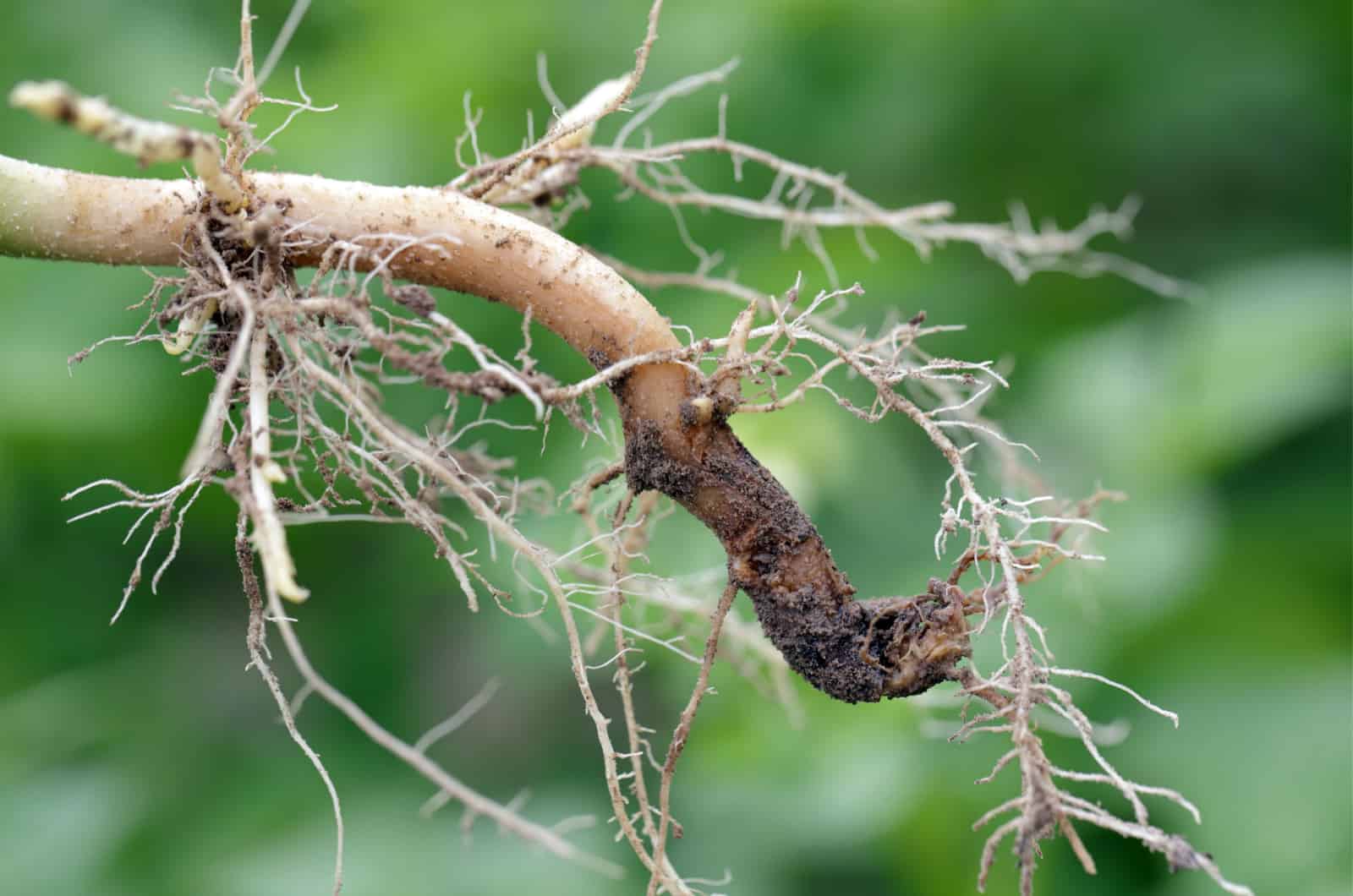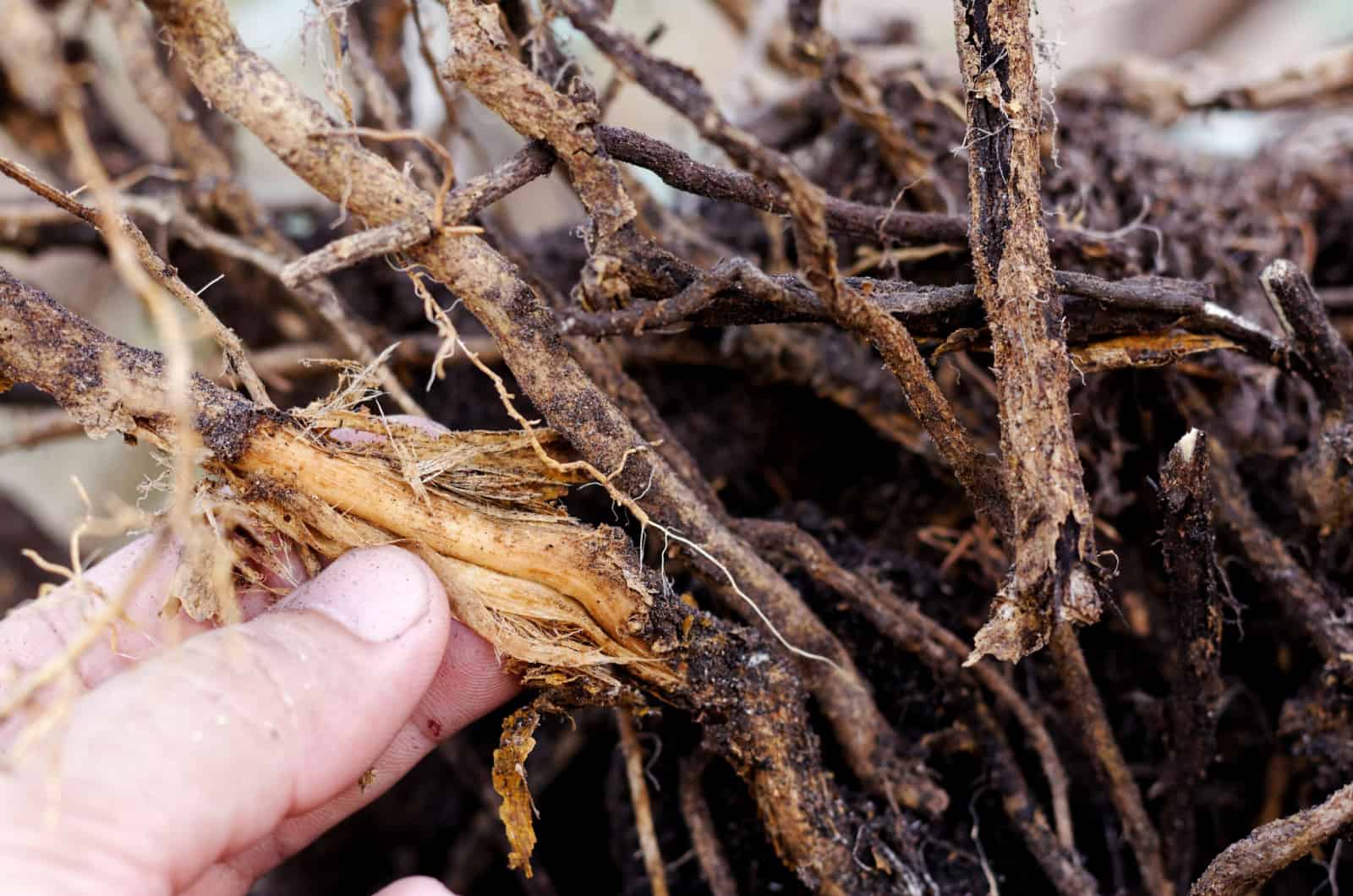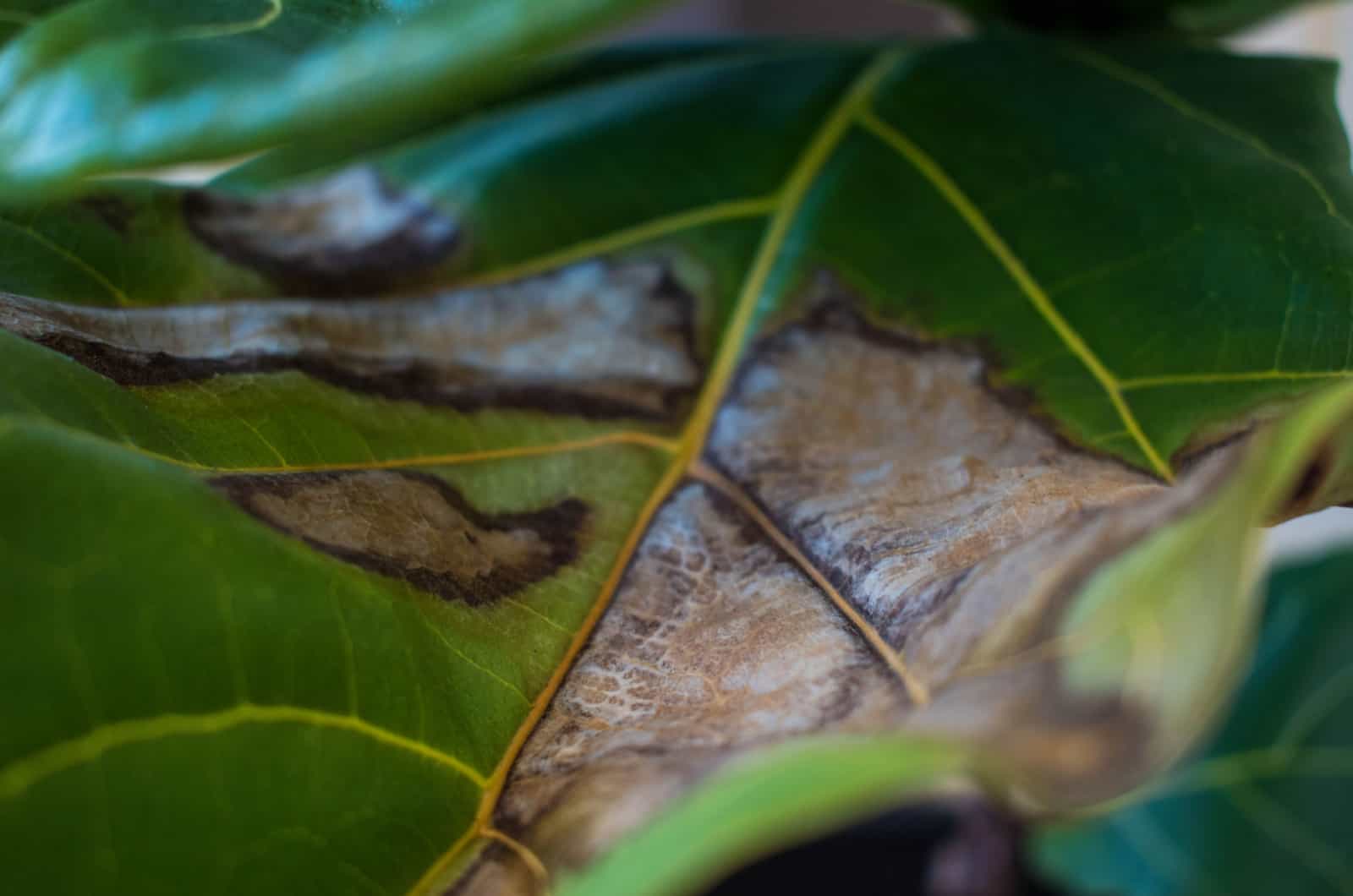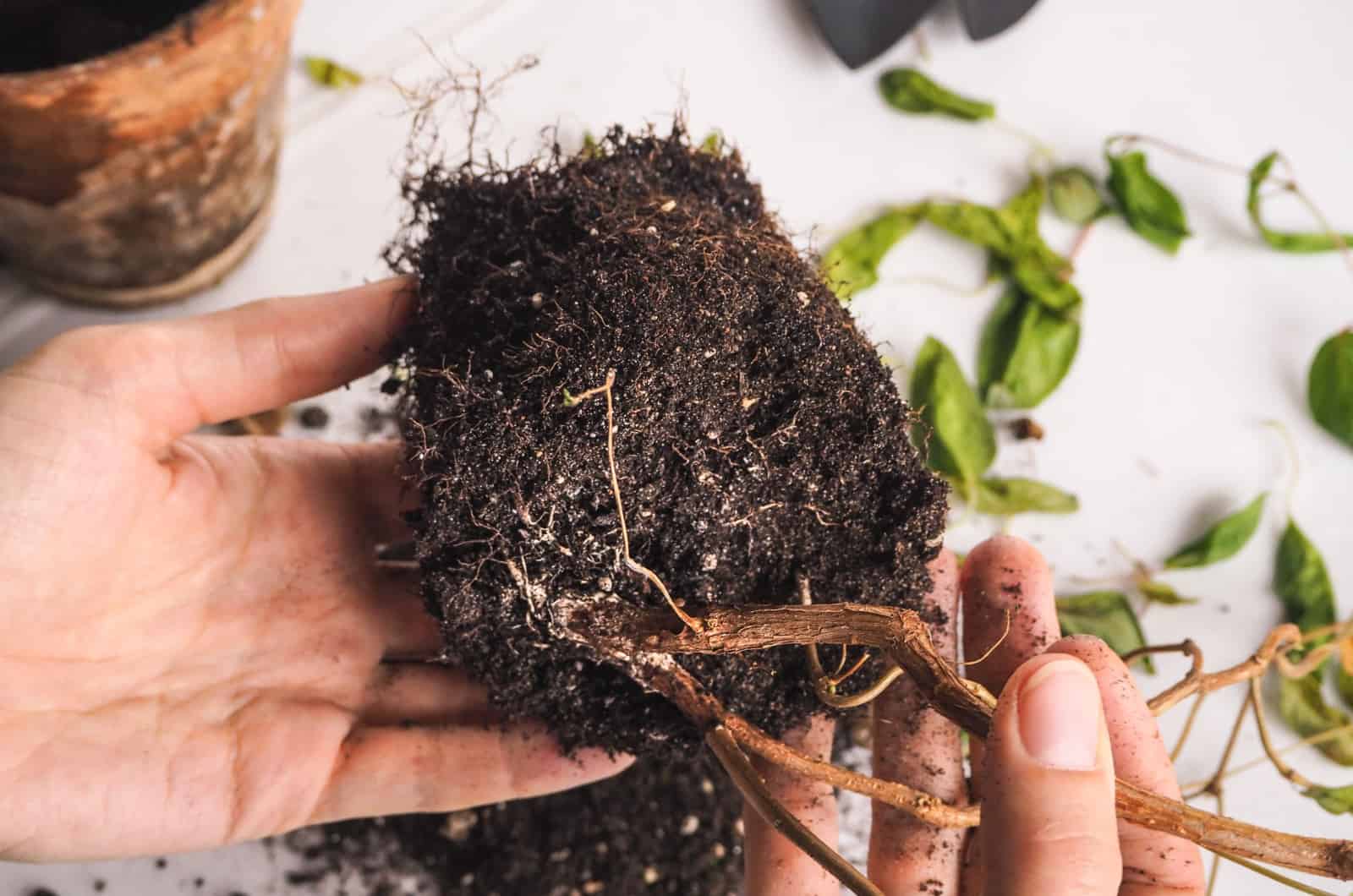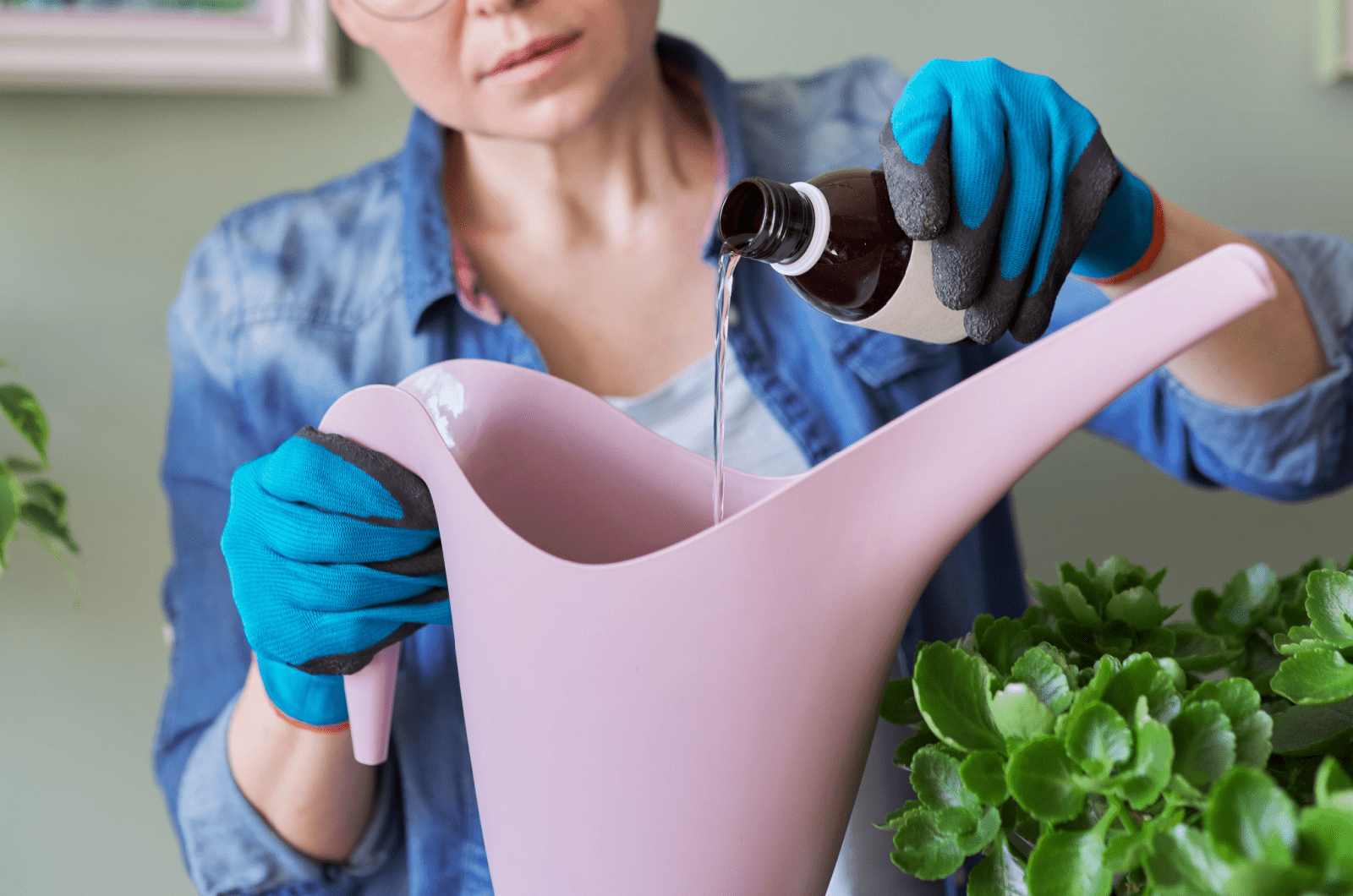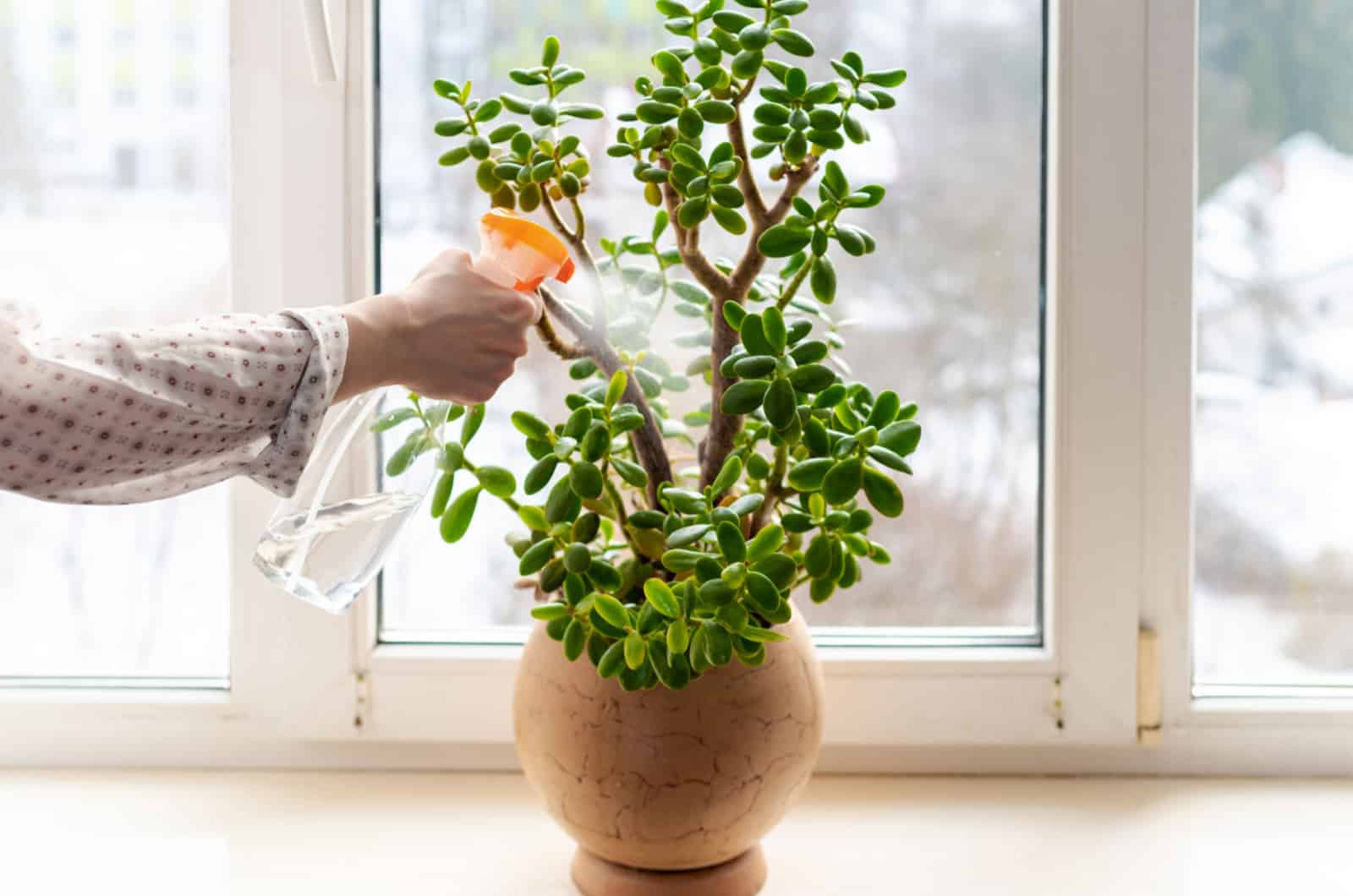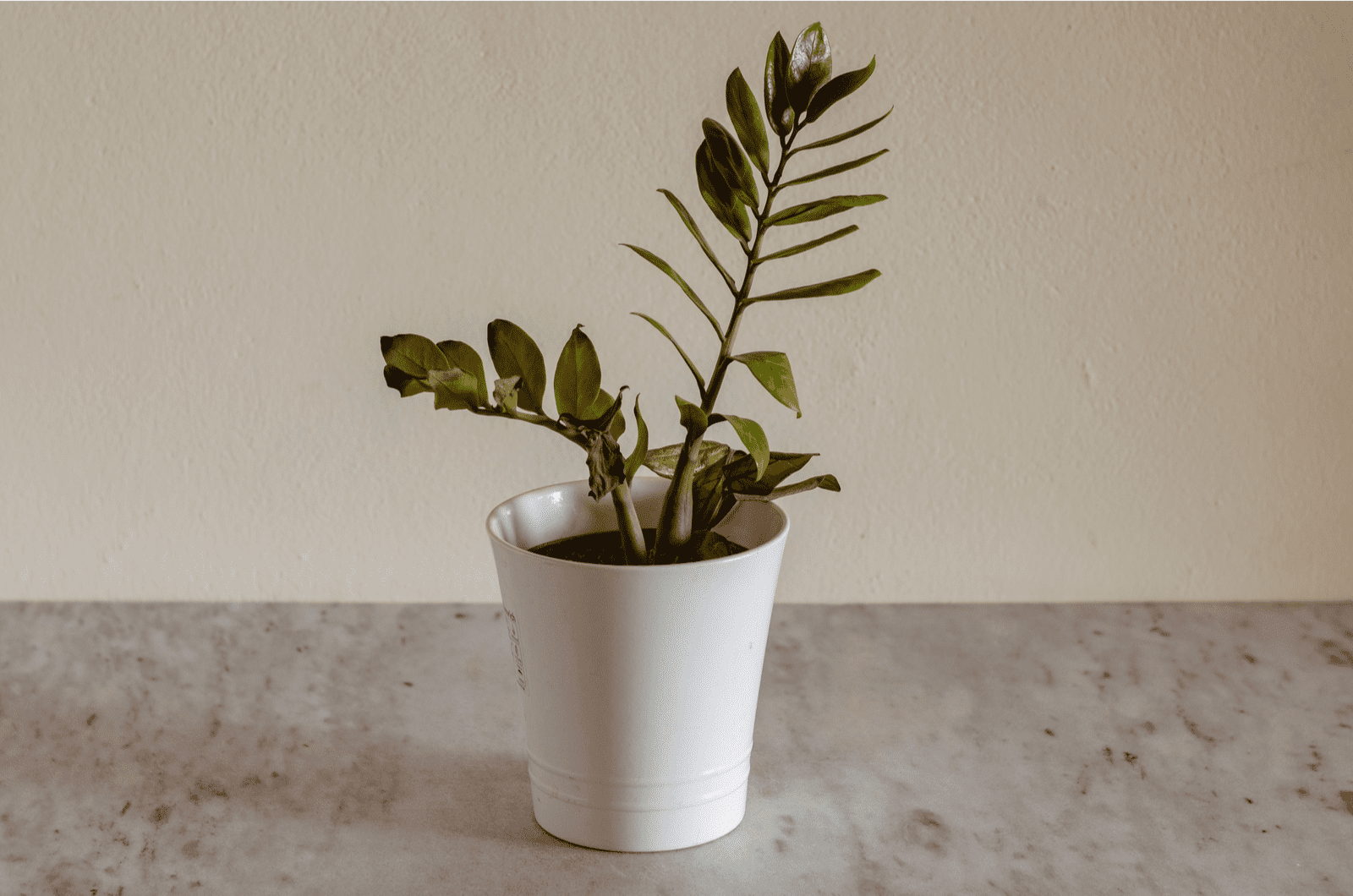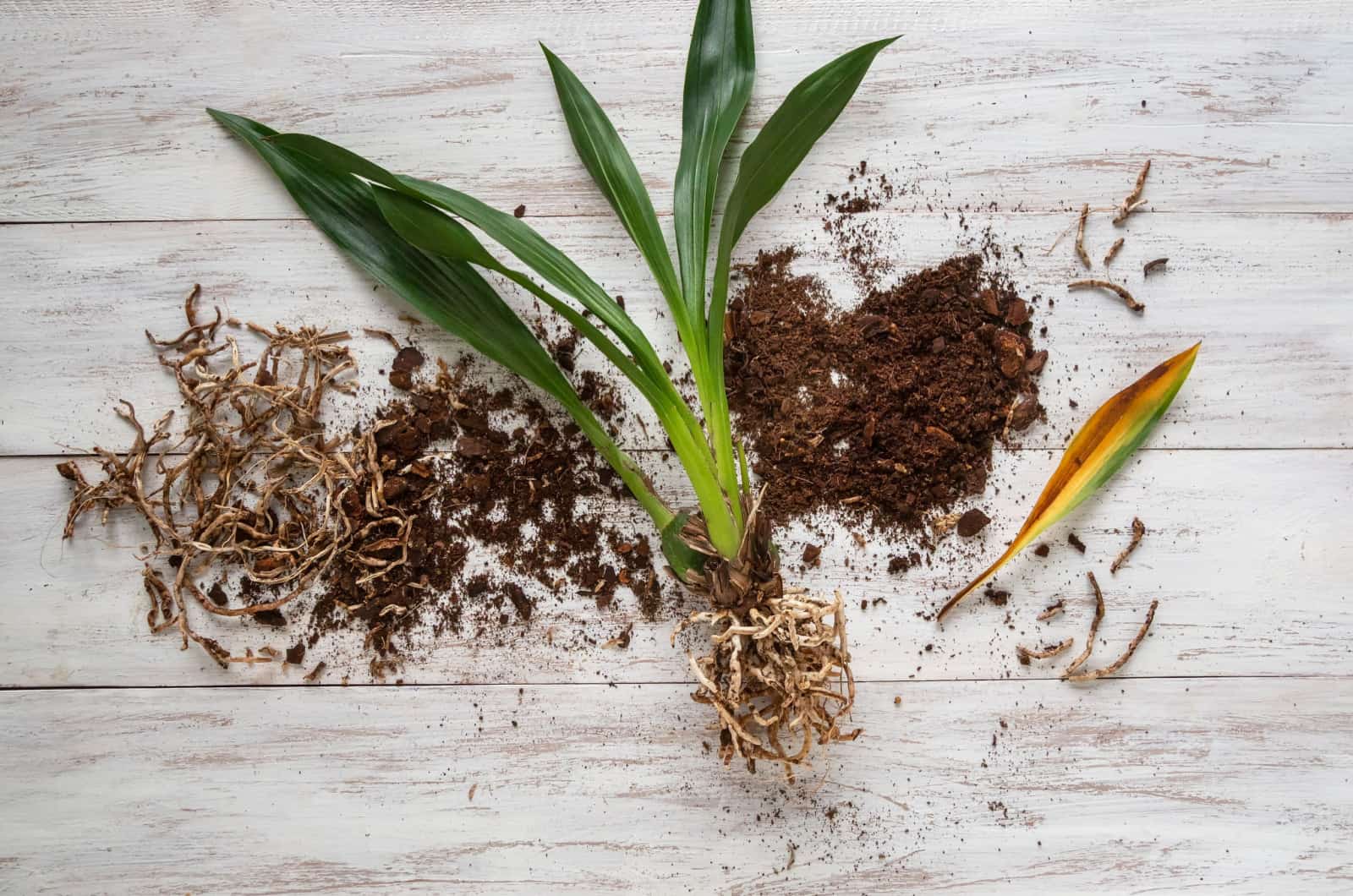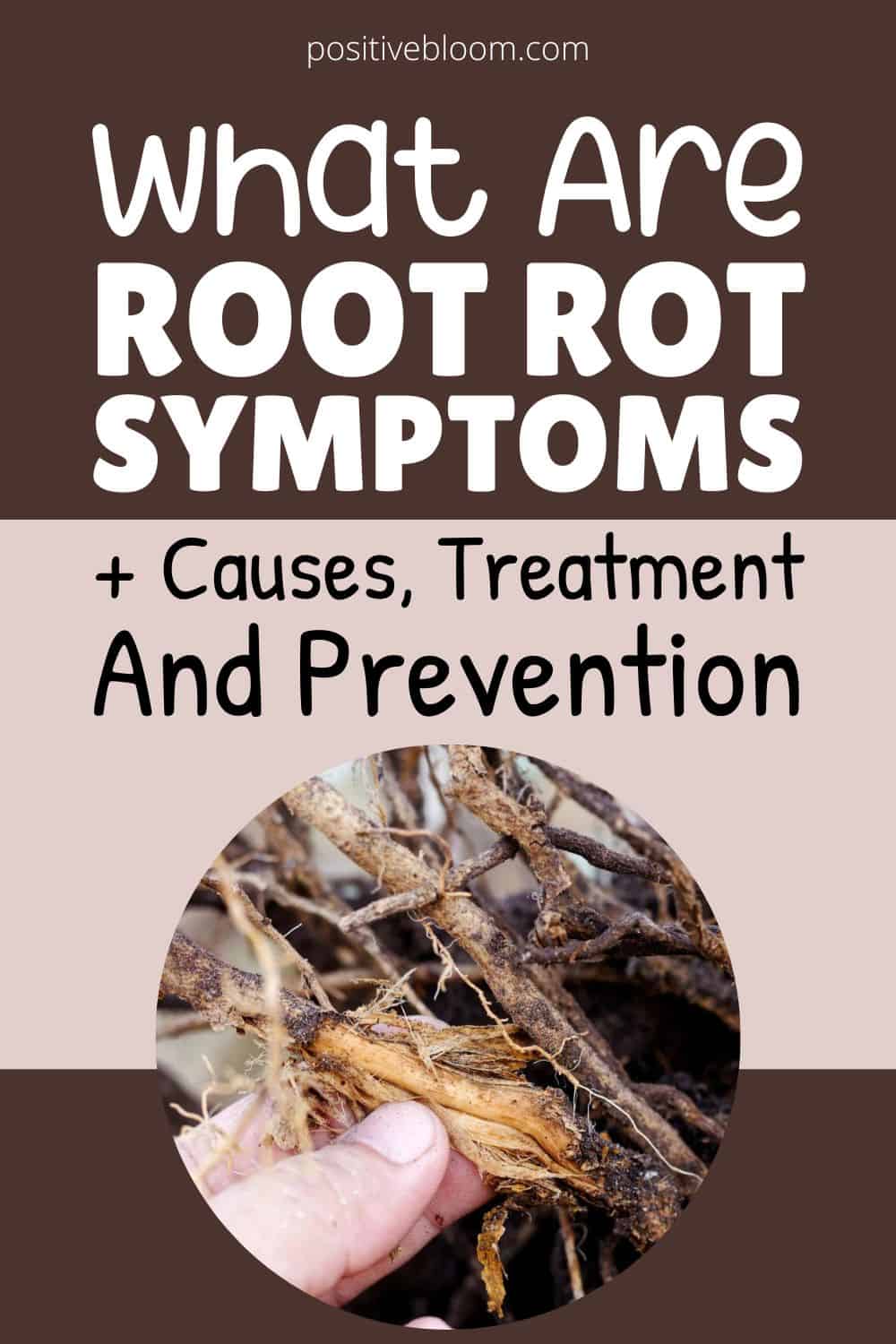I’m sure that root rot is the most common topic of plant care. Although some plants are hardy and grow well in various conditions, they’re all susceptible to root rot.
Why is this so? Well, when we grow plants indoors, it basically means that they won’t receive food or water without our help.
We sometimes make mistakes, and some may lead to serious consequences, which is the case with this root disease.
The first thing to learn is root rot symptoms. Even though plants differ in structure, growth rate, or growth habit, they have some things in common, which is why they’ll display similar changes in their appearance.
So, let’s learn more about this disease, how to identify it, what causes it, how to treat it, and finally, how to prevent it from occurring again.
Let’s get started!
Root Rot Symptoms
The thing with this disease is that it affects different parts of the plant depending on the stage of development.
So, plant leaves will first display changes, especially the lower leaves. Something serious is happening below the soil line if you notice leaf discoloration and mushy soil with a foul odor. If the stem is browning and the plant is wilting, the rot has reached the final stage of development.
For instance, the abovementioned signs will all show up if Monstera has root rot.
Let’s first find out what this dangerous disease is.
What Is Root Rot?
One of the most common plant diseases is root rot, and it is mainly caused by us providing indoor plants with inadequate conditions.
These conditions are related to watering, fertilizing, light, humidity, potting mix, or temperature. Simply put, whatever causes the roots to lose oxygen and stop breathing, will aid in the disease development.
Soil is also the home for fungi such as Phytophthora, Pythium, Fusarium, Rhizoctonia, Botrytis, and Alternaria, which may cause the disease if they start developing in colonies.
The trickiest thing about this disease, though, is that the symptoms are similar to other conditions, making the infection harder to identify and treat.
The longer we wait to begin treatment, the bigger damage the disease will cause.
Let’s look at some symptoms of root rot in plants.
Yellow Leaves
Keep in mind that a robust root system distributes nutrients and moisture to the other sections of plants. Without these two components, the leaves cannot survive. They will undergo modifications in reaction to a shortage of water and food.
If the leaves on some of your plants start to turn yellow, this root disease may be the cause.
For example, if the leaves of your palm tree start turning yellow, they may be suffering from this disease.
Don’t draw any immediate conclusions because this symptom can also point to other problems with your plant. Instead, see if the other requirements are being met.
A lack of water, sudden change in temperature, nutrient deficiency, poor lighting, pests, or repotting can all contribute to yellowing.
Black/Brown Spots
When plant roots stop working, you’ll also notice spots on the leaves that may be either brown or black.
For instance, the ZZ plant may display black spots if the roots are rotten.
Unfortunately, if your plant displays black spots whose edges turn yellow, it’s only one step away from death, as the disease has started to eat out the leaves.
Once you notice these changes, you’ll urgently need to start saving your plant, unless it’s already too late.
Wilting
I immediately associate wilting with dehydration or high temperatures when someone discusses it. Unbelievably, root rot can also be detected through wilting.
The problem is that although it is about dehydration, it is the leaves, not the plant, that are affected. Why is that? The roots also stop feeding and providing water to the plant’s leaves if they are damaged or cease to function.
For example, if the Money tree has root rot, it will display wilting.
The simplest technique to determine if your plant needs water or already has too much is to observe and measure the soil’s moisture level.
For example, you can check the soil’s color; if it’s dark, postpone watering. Also, sticking your fingers in the soil is another suitable method of detecting soil moisture content.
Stunted growth usually comes alongside wilting, and that’s the next thing we’ll discuss.
Stunted Growth
Before discussing deteriorated growth rates, we have to mention a few other things. For instance, some plants have a slower growth rate, like some succulent species.
Therefore, if your plant is growing slower, consider its growth rate first. If you have a fast-growing plant that stops growing, you’ll need to check out the root system.
Such a case is presented with fiddle leaf fig root rot; it’s a fast-growing plant whose growth rate will be significantly reduced.
However, you should take into consideration other potential causes of a slow development rate because inhibited growth isn’t always indicative of a problem with the roots.
The majority of indoor plants hibernate as winter approaches; you’ll often come across the term dormancy. Consider this to be the period of rest your indoor plants require after active growth.
Houseplants don’t need much water or nutrients during the winter months.
The hard part is that throughout the growing season, your plant’s growth could also be hampered by insufficient lighting, inadequate fertilizer, and underwatering.
You need to carefully examine your plant and take the season into account if you want to figure out what’s wrong and why it isn’t developing as quickly as it could.
Root Discoloration
Many people have issues determining root health according to color, as the color and structure of healthy roots is different to diseased roots.
Healthy roots appear to be light in color, mostly grayish-white. So, what do diseased roots look like?
If you notice that roots are dark, usually brown or black, they have started rotting, and if they are mushy, they may be entirely rotten. Additionally, the roots will be thinner.
Mushy Soil With An Unpleasant Smell
The cases as mentioned earlier indicate that you should examine the root system. Most of my houseplants have lovely scents, and I’m afraid of terrible smells because they usually mean something bad is going on.
Regrettably, root rot is a case in point. The decomposing stench of the soil will be the most repulsive of all.
It’s important to note that while the scent isn’t overpowering in the early stages of the illness, it becomes worse with time.
A very strong odor may indicate that each part of the root system is affected by the disease.
Additionally, you’ll notice mold on the topsoil, which is a tell-tale sign of root rot.
Black/Brown Stem
If the stems are turning black or brown and they are mushy to touch, the disease is in its final stage.
The roots are suffocated, so the stems don’t have water or nutrients and display browning or blackening.
Unfortunately, when this happens, your plant will most likely die.
What Causes Root Rot In Houseplants?
Well, root rot disease doesn’t come out of nowhere. Believe it or not, we are the ones responsible for the disease in most cases.
The most common cause of this disease is mainly related to overwatering, because too much moisture in the soil attracts root-eating fungi.
Let’s get into the details!
Overwatering
What does overwatering refer to? First, it’s connected to watering frequency, as watering too often may lead to water accumulation in the soil.
The next thing is waiting too long for watering. For example, you wait too long to water and then continue adding too much water until the roots go through shock and become more susceptible to disease. An overwatered pothos plant will display many changes when its roots start rotting.
When discussing watering, I need to mention two things related to pots that significantly contribute to watering issues.
Size of the pot
The first one is the size of the pot; well, we all know that smaller pots prevent plant roots from spreading, but did you know that large pots may cause root diseases too?
How is that possible? Most beginner growers think that more soil around the roots will help our plants develop bigger and stronger roots. Unfortunately, that’s not the case.
Bear in mind that the soil retains water; if you add too much of it, by using larger pots, the roots will be sitting in water. What happens next is notorious rotting!
Drainage holes
When buying pots for houseplants, you’ll notice hundreds of beautiful pots that will combine perfectly with your home decor.
Remember, if the pot of your string of heart plants doesn’t have drainage holes, you’ll be dealing with an overwatered string of hearts, and so on.
Poor Drainage And Aeration
Although many think that potting mix for plants needs to be only nutrient-rich to avoid nutrient deficiency, there’s one more essential thing to consider. The drainage is what we often forget when choosing the potting mix for indoor plants.
For example, there are many types of potting soil for palm trees, but only the ones with good drainage will suffice for the needs of palms.
Porous and well-draining soil types will help the plant get rid of the excess water and, in that way, prevent overwatering.
Fungal Infection
Root rotting is often caused by fungal infections that come after waterlogging. There are a few fungal species that cause this disease, but we will mention the most common ones.
Phytophthora
The first fungi we’ll mention that cause this disease are the Phytophthora species. One of the characteristics of these organisms is that they are located in the soil, where they can endure for a very long time without a host plant.
If plant roots are not accustomed to growing in wet conditions, the water essentially drowns them because it fills air spaces in the soil.
Some Phytophthora species, which are transported by airborne spores, predominantly function as foliar diseases, such as late blight on tomatoes or potato blight.
When trees suffer from this disease, they’ll display cankers or vertical lines and, in some cases, branch dieback.
Pythium
Pythium species are soil-borne pathogens that can transmit illness by the movement of infected soil or plant matter.
Fusarium
Another common fungus that primarily affects soybeans is Fusarium oxysporum f. spp. radicis-lycopersici. It’s transmitted from root to root, through infected tools or air, or even humans can spread it when handling plants.
You may frequently deal with this disease if you grow peppers, tomatoes, or eggplants.
Rhizoctonia
Rhizoctonia solani is another fungus that affects plants. It prefers high humidity, and if your plant has any open wounds, Rhizoctonia will feel invited.
Armillaria
Armillaria is the last culprit for fungal infections on our list. If you grow woody plants or trees, remember that this fungus may pay a visit pretty often.
However, many ornamental plants have been reported to be attracted by this fungus.
Overfertilization
One of the essential things you need to do to maintain a healthy plant is feeding.
There are many fertilizers available on the market, and some of them are specialized for certain plants only. The fact is that plants have a specific fertilizing schedule, and if you don’t follow it, some issues may arise.
We mainly add food to boost plants’ growth and often think that applying more fertilizer will promote their growth better.
Well, I have bad news! Constantly fertilizing plants leads to root suffocation, which means that they stop functioning.
This is frequently the case with nutrient-rich fertilizers.
So, how does root rot occur? If you proceed with your regular watering schedule after fertilization and the roots are dead, they’ll rot due to excess water.
How To Treat Root Rot?
We’ve covered the symptoms and causes of this root disease, so it’s time to find out how to treat it.
There’s one excellent procedure that works almost every time, especially if the infection hasn’t gone too far.
The first thing you’ll need to do is to remove the infected plant from the container. You’ll need to do some digging for garden plants until the root system is entirely exposed.
Then, of course, you’ll need to remove the roots that appear to be rotten. Another useful technique is to submerge the roots in hydrogen peroxide to prevent this dangerous disease from spreading.
Fungicides also come in handy at this point. Then, the houseplants, such as a string of hearts, should be repotted (garden plants will need replanting).
Finally, you should get rid of the diseased leaves and try to find a better spot for your plant.
Now, let’s get into the details!
Take Your Plant Out Of The Pot/Soil
The way you take the plants out of their containers will mainly depend on the type of plants you grow.
Of course, taking a mature fiddle leaf fig plant out of its container will be way more complicated than taking some other houseplants out.
The first thing to remember is not to pull plants or use any force when handling them as they will be more sensitive due to their diseased roots, and any further damage may kill them.
I recommend leaning pots/containers to one side and then tapping the pot. But, please, do it carefully and let the plant slide out by itself. It may take time and more effort, but it will be worth it.
For garden plants, dig carefully until you can clearly see the root system, and, using a garden shovel, gently lift the plant out.
Remove Diseased Roots
Before you start cutting off the diseased roots, remember that the shears, scissors, or pruners need to be clean in order to prevent the spreading of the disease.
Many sanitizing solutions are available, but I mainly use bleach or rubbing alcohol. Also, don’t forget to clean the tools before each cut.
Once you remove your plants from their original containers, you won’t see all the roots clearly as the soil will still be attached to them. Your goal is to remove the soil to get access to the roots, and don’t worry if some roots simply fall off; remember, they are weak and not fully attached to the root ball.
Cut any unhealthy, rotten roots until only the healthy ones remain.
Dip The Remaining Roots In Hydrogen Peroxide
I highly recommend the hydrogen peroxide method; it always works for me. Add a tbsp of hydrogen peroxide to approximately one cup of water, and pour the mixture into a larger dish.
If you have smaller plants, just immerse the healthy roots in the mixture. For larger plants, I pour the solution into a spray bottle and just spray the root system.
Fungicides can be applied, but with great caution. Remember that it consists of dangerous chemicals that can affect your hands, so if using them, please read the instructions and don’t use more than you need.
Place Your Plant In Fresh Soil And A New Pot
Now it’s time to freshen things up a little bit! After the removal of the diseased roots, your weak plant will need new nutrients, so using a unique potting mix sounds like a great idea.
Be careful when choosing soil types for plants. For example, the best soil for ZZ plants should be porous and well-draining to avoid water accumulation.
The correct pot choice is also essential; for example, the best pot for cactuses is made of terracotta or other porous materials and should be 10% broader than the plant.
Add fresh soil to the new pot and gently place your now healthy plant in it.
Remove Affected Leaves
Only one thing is missing for your plant to regain its old glory. Root rot caused a lot of damage to the leaves, so you’ll need to remove all yellow and brown leaves, and those with spots.
Don’t worry; new leaves will soon appear, and your plant will look perfect again.
I always check the leaves, especially the undersides, as some naughty pests may hide there.
Find A New Place For Your Houseplant
Now you no longer have an affected plant and you’ll want to keep it that way.
So, you’ll need to check all of the conditions that may have contributed to the root rot.
For example, houseplants have different temperature tolerances, so you’ll need to find the spot that has perfect temperature ranges for your particular plant.
If you grow snake plants, learn all about the snake plant temperature tolerance.
Another important factor is humidity. Tropical plants need high humidity levels, so if you grow them, find more humid places for them.
Pay attention to light exposure. For example, bonsai trees need a specific amount of light, and if you want them to grow healthily, you’ll need to ensure bright but indirect light.
How To Prevent Root Rot
I’m sure that you want to know how to prevent this dangerous disease, and that’s the best thing you can do for your precious plants.
As the disease is primarily caused by overwatering, you’ll need to pay close attention to the watering frequency, but also to the drainage and aeration of the soil.
Let’s see more!
New Watering Schedule
The essential thing to remember is that all plants have different watering needs, so you should adjust the watering schedule according to the plant’s preferences.
But, all houseplants have one thing in common: they hate wet soils! So, to avoid watering issues, I have a few tips that can apply to any plant.
First, never water the plant if you haven’t checked the soil moisture content!
There are a few ways to check the moisture level; finger-sticking method, soil-color method, pot-weight method, and moisture meter.
How To Check Soil Moisture
Let’s first discuss the finger-sticking method. It applies to both smaller and larger plants. It may take time and some practice before this method is fully reliable for you, so you can combine it with other methods that I’ll show you below until you figure it out properly.
If you feel that the soil is moist, check it again the next day.
The soil-color method also works for smaller and larger plants; when the topsoil is dark brown, that means that it has enough moisture and doesn’t need any water at this point. Of course, if the soil is too wet and the plant looks unhealthy, the issue is described above.
Pot-weight is only applicable to smaller plants; I think the reason is apparent, no matter how much time you spend in the gym, the possibility you’ll lift a mature fiddle leaf fig is very low. A lightweight pot means that your plant needs water.
Finally, the most reliable method that works for all plants, including garden plants, is a moisture meter. If you are a beginner grower, I highly recommend purchasing this handy device.
Which Watering Technique To Use
You can use plenty of tools for watering plants, such as a garden hose, a watering can, a bucket, or a sink.
If you decide on top watering, you can use either a watering can or a garden hose. A garden hose is a perfect choice if you have larger plants. If you decide on using a watering can, make sure the neck is goose-like and long.
Another method is bottom watering, and this method is only applicable to smaller and lightweight plants.
All you need to do is fill half of the bucket, sink, or any other deep and wide container with water and place your plants in it.
The soil will absorb water slowly but safely, and then you should lift it and allow it to dry.
I recommend the bottom watering technique for beginner growers, of course, only if they have smaller plants.
Which Type Of Water To Use
When choosing water for plants, remember that plant roots are sensitive to chlorine and fluoride, so avoid using tap water as it has the highest concentration of these two elements.
I recommend using rainwater; remember that plants receive that water type in their natural environment, so consider collecting rainwater and using it for your plants.
The alternative is filtered water; it’s not good as rainwater, but it’s certainly better than tap water.
When it comes to water temperature, the best option is to use lukewarm water; too cold water will cause stress, and too warm water will burn the plant.
Ensure Good Drainage & Aeration
Here are a couple of ways to promote soil drainage and aeration:
• Use pots made of terracotta or similar porous materials.
• Pay attention to pot size; don’t purchase too small as the roots won’t spread, or too large as they will have too much soil in them.
• Buy containers with drainage holes at the bottom. But, there’s a hack; if you like a specific pot, purchase it and then put the plant with the original pot (terracotta, plastic) in it.
• Use high-quality potting soils designed for plants you grow (Monsteras, palm trees, etc.).
• Add materials such as perlite, pumice, or gardening sand as they’ll aid in drainage and also aeration.
Inspect Your Plants Regularly
Please never skip this step; inspect your plants whenever you can, and the sooner you notice an issue, the higher the chances are for a plant’s recovery.
This strategy won’t only help you with root rot detection but also other issues, such as pests, light issues, or humidity issues.
Can Plants Recover From Root Rot?
The short answer to this tricky question is yes. However, it depends on factors such as the severity of the damage.
Of course, if the entire plant is affected and each part is diseased, there’s nothing left to do but discard it.
But, sometimes, the plant may look dead, but some parts may still be healthy, such as the part of the stem with the node, so you can use it for propagation.
As long as there are a few healthy roots, your plant will recover.
Is Root Rot Contagious?
Unfortunately, the answer to this question is a big YES. The problem is that there are many ways to transmit root rot disease.
For example, if you use the same tools for unhealthy and healthy plants without sanitizing them, the disease will certainly transmit.
You can also help the disease to spread if you don’t use gloves or don’t discard the ones you’ve been using for the diseased plant.
Finally, it may sound like a good idea to reuse the soil of one plant; please never do this. Always discard the soil after repotting, especially if the plant that was growing in it was diseased.
FAQs
Can root rot repair itself?
No, root rot can’t repair itself and can only spread to the entire plant or affect the other plants you grow. Remember that roots that are rotten are dead, and they can’t come back to life.
What is the most common cause of root rot?
The most common cause of root rot is, by far, overwatering. If you have poor-draining soil, water your plants too often, or are not consistent, the chances for your plants to get this disease greatly increase. Fungi love water and will gladly activate if you add more water than the roots can absorb.
Final Thoughts
No matter how long you’ve been growing plants, issues may and will occur from time to time.
Don’t ignore the signals your plant is sending you. I know it may sound weird, but that’s their way of talking.
For example, root rot symptoms include yellowing or browning of the leaves or stem, black or brown spots, mushy soil, a foul odor, and root discoloration.
The essential thing is to figure out what has caused the issue, so you can start the proper treatment.
And remember, the best way to deal with root rot disease is to prevent it from occurring.
Please pay close attention to each aspect of plant care, and, of course, don’t forget to ask your plant about its feelings; I mean, check on it regularly.
Until next time!
Like this post? Share or pin it for later!

